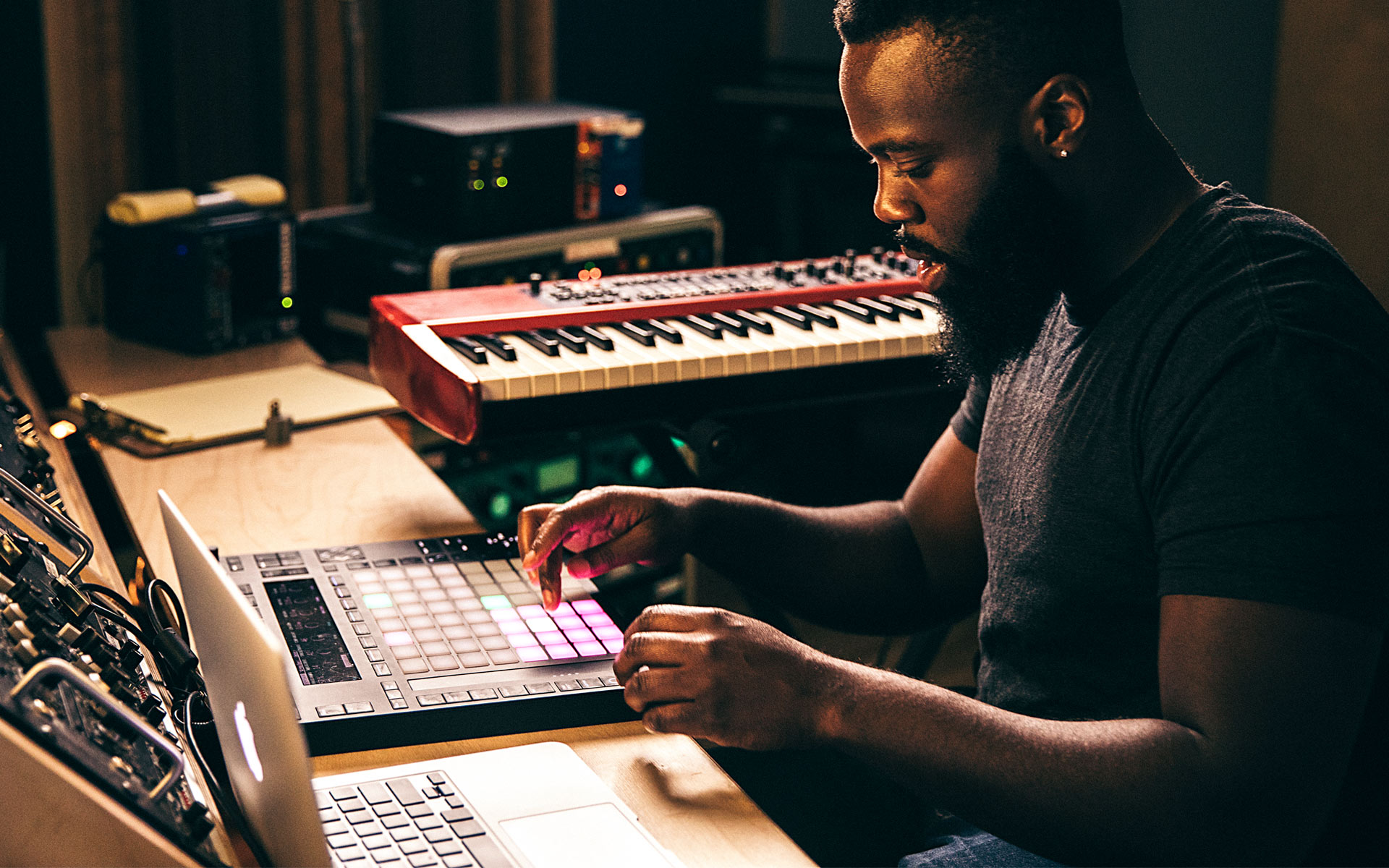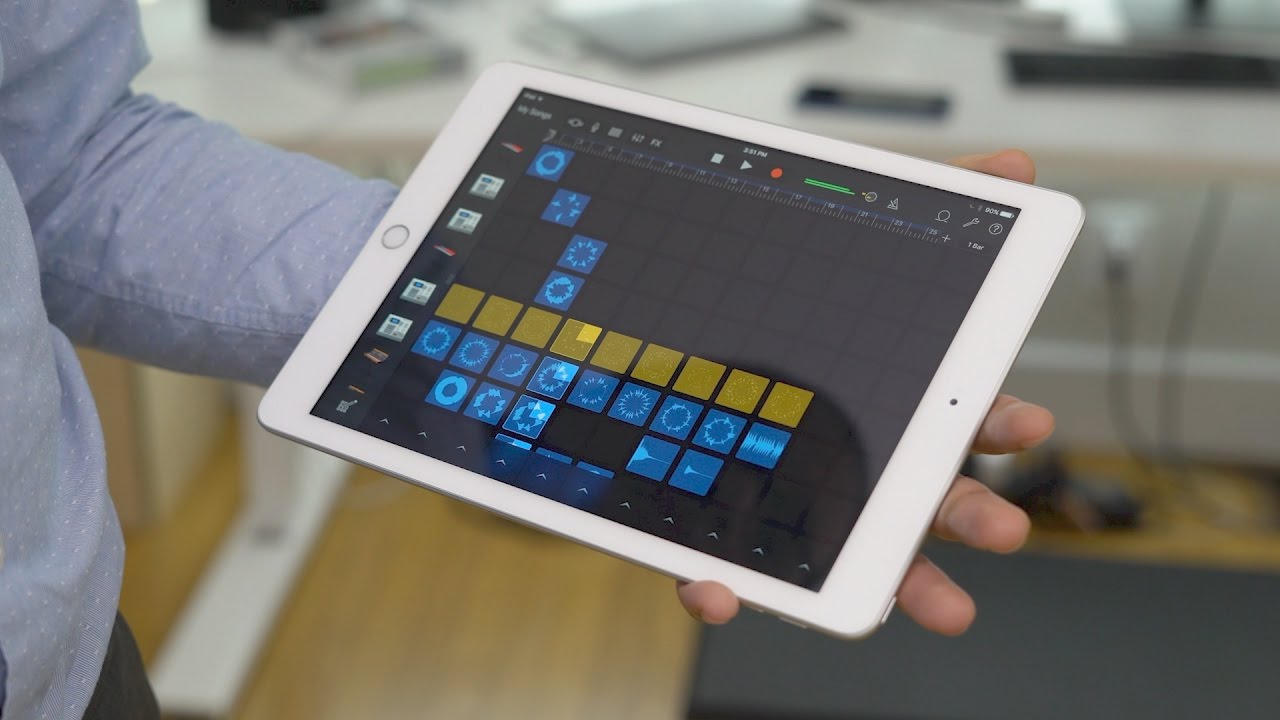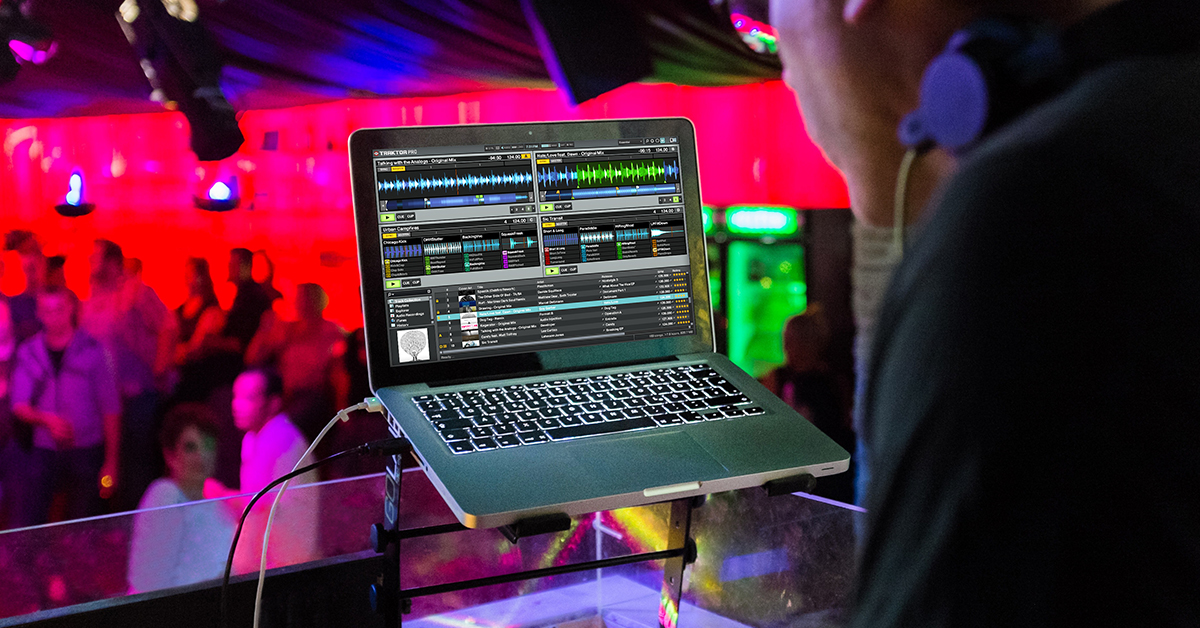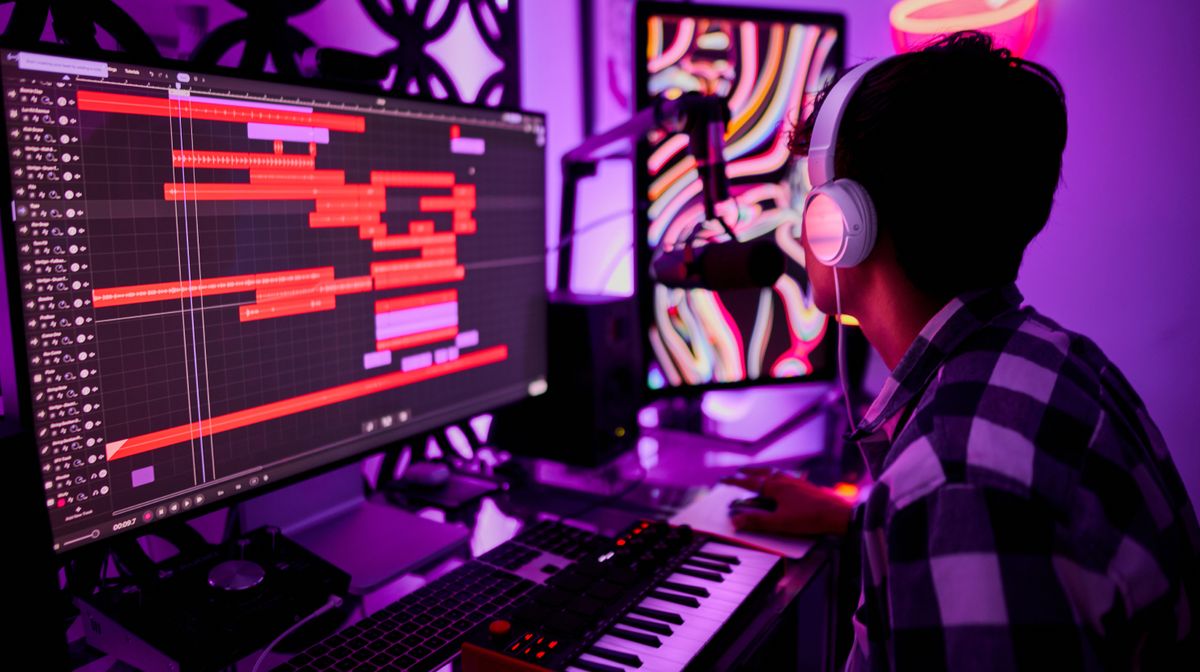Home>Production & Technology>Remix>How To Remix Pokemon Music
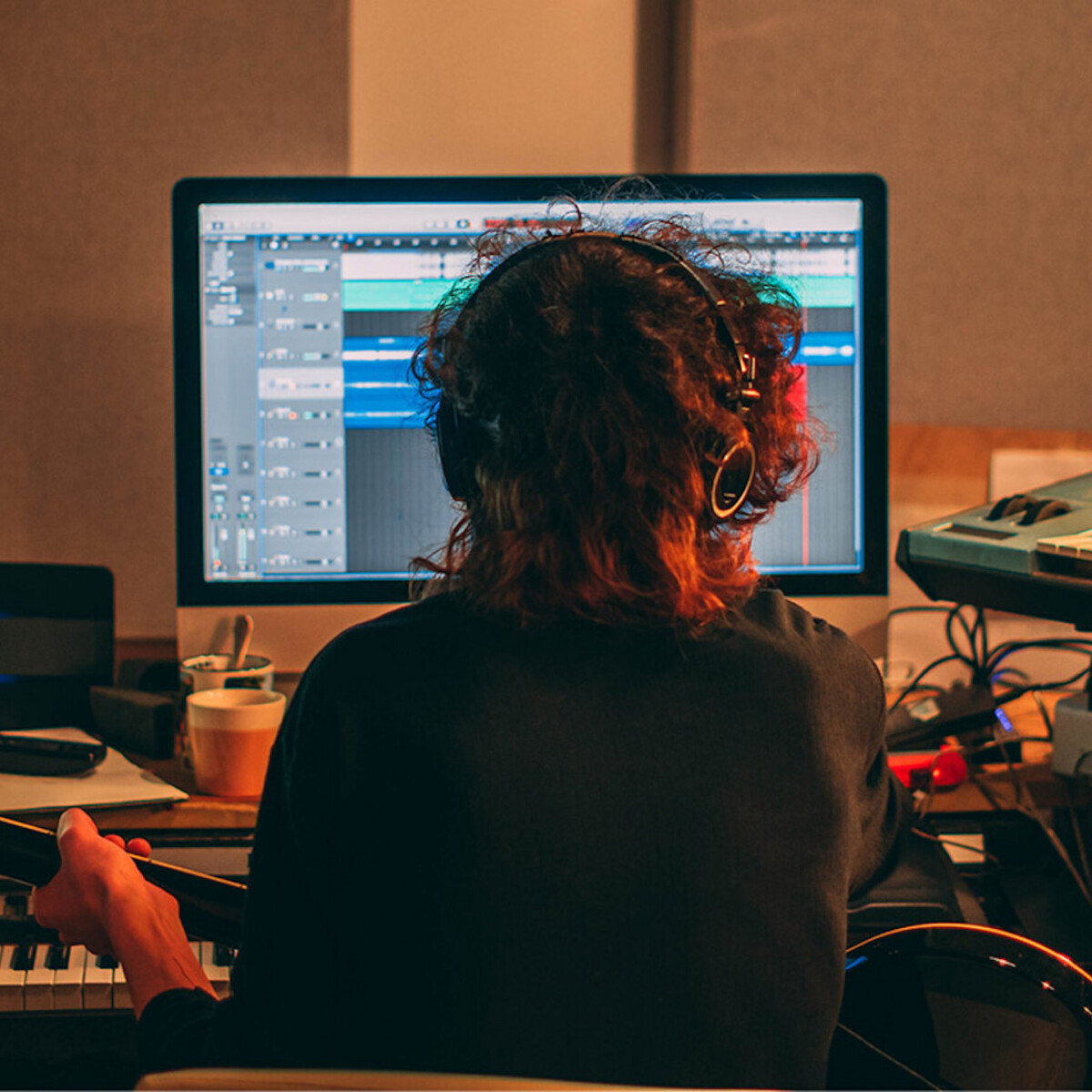

Remix
How To Remix Pokemon Music
Modified: February 19, 2024
Learn how to remix Pokemon music with our step-by-step guide. Unleash your creativity and give your favorite tunes a fresh and unique twist.
(Many of the links in this article redirect to a specific reviewed product. Your purchase of these products through affiliate links helps to generate commission for AudioLover.com, at no extra cost. Learn more)
Table of Contents
Introduction
Welcome to the exciting world of remixing Pokémon music! Pokémon has been capturing the hearts of fans for decades with its enchanting melodies and catchy tunes. Whether you’re a seasoned musician or just starting out, remixing Pokémon music allows you to put your own creative twist on beloved songs and create something truly unique.
Remixing is the process of taking an existing piece of music and reimagining it by adding new elements, altering the arrangement, or incorporating different genres. It’s a creative and exhilarating way to express your musicality while paying homage to the original track.
In this article, we’ll dive into the world of remixing Pokémon music and provide you with the tools, techniques, and tips to create captivating and innovative remixes. Whether you’re a fan of the classic chiptune sounds or want to experiment with modern production techniques, there’s something for everyone in the world of Pokémon remixes.
Before we delve into the specifics, it’s important to note that remixing Pokémon music is a creative endeavor. While this guide will provide you with essential information and techniques, remember that the true essence of remixing lies in expressing your own style and musical vision. Feel free to adapt the suggestions to suit your personal taste and let your creativity shine.
So, grab your headphones, fire up your digital audio workstation, and get ready to embark on a musical journey to remix Pokémon music like never before!
Understanding Pokémon Music
Before diving into the process of remixing Pokémon music, it’s important to have a solid understanding of what makes the original tracks so captivating. Pokémon music is known for its catchy melodies, adventurous themes, and diverse range of musical styles.
Throughout the various Pokémon games, each region has its own unique soundtrack that reflects the setting and atmosphere. From the upbeat and energetic tunes of the Kanto region to the mystical and tranquil melodies of the Sinnoh region, Pokémon music is an integral part of the immersive gaming experience.
One of the key elements of Pokémon music is the use of repetitive motifs. These motifs serve as musical hooks that repeatedly appear throughout a specific track, creating a sense of familiarity and reinforcing the overall theme. By understanding these motifs, you can incorporate them into your remixes to pay homage to the original music.
Additionally, Pokémon music often incorporates a variety of instruments and sounds. From classic chiptune-style synthesized sounds to more modern orchestral arrangements, Pokémon music is a melting pot of musical styles. This versatility allows for a wide range of creative possibilities when it comes to remixing.
Furthermore, the pacing and structure of Pokémon music is designed to complement the gameplay experience. Battle themes build up excitement and intensity, while exploration themes create a sense of wonder and discovery. To create impactful remixes, it’s essential to understand how these different elements come together to evoke specific emotions in the listener.
Lastly, Pokémon music is deeply ingrained in the hearts of fans worldwide. Many players have fond memories associated with specific tracks, making remixing Pokémon music a nostalgic and cherished pursuit. By tapping into this emotional connection, you have the opportunity to create remixes that resonate with listeners on a personal level.
Now that we have a deeper understanding of Pokémon music and its key components, it’s time to move on to the next step: selecting the perfect Pokémon music track to remix.
Selecting a Pokémon Music Track
Choosing the right Pokémon music track is crucial to creating a successful remix. With countless tracks available across the various Pokémon games, it can be overwhelming to decide which one to remix. Here are some tips to help you select the perfect Pokémon music track for your remix:
- Personal Connection: Consider selecting a track that holds personal significance for you. Whether it’s a memorable battle theme, a catchy gym leader tune, or a soothing town melody, choosing a track that resonates with you will fuel your creativity and passion throughout the remixing process.
- Iconic Tracks: Pokémon has several iconic tracks that are instantly recognizable by fans. Remixing these well-known tracks can be a great way to captivate listeners and provide a nostalgic experience. From the iconic Pokémon Center theme to the legendary battle themes, these tracks have stood the test of time and are beloved by fans worldwide.
- Diverse Genres: Pokémon music covers a wide range of genres, from upbeat electronic beats to serene orchestral arrangements. Consider exploring different genres and selecting a track that allows you to experiment with your preferred musical style. This will not only showcase your versatility as a remixer but also provide a fresh and unique take on the original track.
- Audience Appeal: If your goal is to reach a wider audience, choose a track that is popular and well-known among Pokémon fans. Remixing a track that holds widespread appeal will increase the chances of people connecting with your remix and sharing it with others.
- Underrepresented Tracks: On the other hand, you may want to consider remixing a lesser-known or underrepresented track. This can help you stand out from the crowd and introduce fans to a hidden gem they may not have heard before.
Remember, the ultimate goal is to select a Pokémon music track that you enjoy and feel inspired by. Your passion and enthusiasm for the music will shine through in your remix, making it a joy for listeners to experience.
Once you’ve chosen the perfect Pokémon music track, it’s time to analyze and deconstruct it to gain a deeper understanding of its composition, structure, and elements. This will serve as the foundation for your remixing process.
Analyzing the Original Track
Before you start remixing a Pokémon music track, it’s essential to analyze and deconstruct the original composition. This analysis will help you understand the various elements that make up the track and guide your remixing process. Here are some key aspects to consider when analyzing the original track:
- Melody: Identify the main melody of the track. This is the central theme that defines the song and often serves as its most recognizable element. Understanding the melody will allow you to incorporate it into your remix while adding your unique touch.
- Chords and Harmony: Pay attention to the chord progressions and harmonic structure of the original track. This will help you recreate the harmonic framework in your remix and ensure that it remains true to the original while exploring new musical directions.
- Rhythms and Beats: Analyze the rhythmic patterns and drum beats used in the original track. This includes identifying the drum patterns, percussion elements, and any rhythmic variations or syncopations. Understanding the rhythmic foundation will allow you to build upon it in your remix.
- Instrumentation and Sound Design: Take note of the instruments and sounds used in the original track. This could include synthesized sounds, orchestral instruments, or electronic elements. Analyzing the instrumentation will help you recreate and manipulate the sounds in your remix.
- Arrangement and Structure: Study the overall arrangement and structure of the original track. Pay attention to the intro, verse, chorus, and bridge sections, as well as any transitions or variations in the arrangement. Understanding the structure will guide your remixing process and help you create a cohesive and engaging remix.
As you analyze the original track, try to listen to it multiple times, focusing on different elements each time. Take notes, annotate the sheet music if available, or create a visual representation of the track’s structure. This analysis will serve as a blueprint for your remix and ensure that you stay true to the essence of the original while infusing it with your unique style.
Once you’ve thoroughly analyzed the original track, it’s time to gather the necessary tools and resources to embark on your Pokémon music remixing journey.
Acquiring the Necessary Tools
Before you can dive into remixing Pokémon music, you’ll need to gather the necessary tools and resources to bring your creative vision to life. Here are the key tools you’ll need:
- Digital Audio Workstation (DAW): A DAW is the software you’ll use to manipulate and arrange the music elements in your remix. Popular DAWs include Ableton Live, FL Studio, Logic Pro, and Cubase. Choose a DAW that you feel comfortable with and offers the features and workflow that align with your remixing goals.
- Samples and Sound Libraries: Building a collection of high-quality sound samples and libraries will provide you with a wide range of musical elements to work with in your remix. Look for sample packs, virtual instruments, and sound libraries that cater to the genres and styles you want to explore in your remix. There are many free and paid options available online.
- MIDI Controller: While not essential, a MIDI controller can greatly enhance your remixing experience. This hardware device allows you to play and record musical notes in your DAW using a keyboard or pads. It adds a level of expressiveness and creativity to your remixing process.
- Audio Editing Tools: Occasionally, you may need to edit or manipulate audio files for your remix. Audio editing tools like Adobe Audition or Audacity will be helpful for tasks such as slicing, time-stretching, and pitch-shifting audio samples.
- Reference Tracks: It can be beneficial to have reference tracks on hand while remixing to guide your creative decisions and help you achieve the desired sound. Choose tracks that align with the style and genre you’re aiming for in your remix. Analyze these tracks to understand how they balance the elements and achieve a professional sound.
Remember, while having the right tools is important, it’s your creativity and musical vision that will make your remix stand out. Don’t be afraid to experiment and push the boundaries of what’s possible with the tools you have.
Once you have acquired the necessary tools, you’re ready to start exploring remixing techniques and tips to take your Pokémon music remixes to the next level.
Remixing Techniques and Tips
Remixing Pokémon music is a creative process that allows you to put your own unique spin on the original tracks. Here are some essential techniques and tips to help you create captivating and innovative remixes:
- Reinterpret the Melody: Experiment with different melodies and variations of the original theme. Try incorporating new melodic lines, changing the rhythm, or exploring different scales and modes. This will add freshness to your remix while still retaining the recognizable elements of the original melody.
- Transform the Chords: Modify the chord progressions of the original track to create new harmonic possibilities. Transpose the chords, change their order, or add additional chords to add complexity and interest to your remix. Be mindful of the original key and ensure that the new chords fit well with the melody.
- Blend Genres and Styles: Pokémon music covers a wide range of genres, from electronic to orchestral. Experiment with blending different genres and styles to create a unique fusion in your remix. For example, adding electronic elements to a classical orchestral piece or infusing a chiptune track with modern EDM sounds.
- Layer Sounds and Samples: Layering different sounds and samples can add depth and texture to your remix. Combine various instruments, synths, and percussion elements to create a rich and immersive sonic experience. Don’t be afraid to layer and experiment with different sounds to find the perfect combination.
- Add New Elements: Introduce new musical elements that were not present in the original track, such as additional layers, vocal chops, or unique sound effects. Be creative and think outside the box to add your personal touch and surprise listeners with unexpected elements in your remix.
- Experiment with Tempo and Time Signature: Altering the tempo or time signature of the original track can dramatically change its feel and impact. Consider speeding up or slowing down the tempo, or experimenting with unconventional time signatures to create a fresh and dynamic remix.
- Create Unique Transitions: Smooth transitions between different sections of your remix can greatly enhance its flow and cohesiveness. Experiment with seamless crossfades, creative filter sweeps, or rhythmic transitions to add excitement and interest to your remix.
Remember, the process of remixing Pokémon music is both an art and a craft. Give yourself the freedom to experiment, take risks, and explore new possibilities. Trust your instincts and listen to your remixed track with fresh ears to ensure it meets your creative vision.
Next, we’ll delve into the important step of adding your unique spin to the remix, which will truly make it your own.
Adding Your Unique Spin
Now that you have a solid foundation for your Pokémon music remix, it’s time to add your unique creative touch to make it stand out from the rest. Adding your personal spin to the remix will not only showcase your individuality but also make it a memorable and captivating musical experience. Here are some ways to add your unique spin:
- Incorporate Your Musical Style: Infuse elements of your preferred musical style into the remix. Whether it’s a specific genre, production techniques, or instrument choices, showcasing your personal musical style will make the remix feel authentic and true to your artistic vision.
- Experiment with Unconventional Sounds: Explore uncommon or unconventional sounds and instruments to bring a fresh and unexpected vibe to your remix. This could involve using unique synthesis techniques, sampling peculiar sounds, or even recording your own unique sounds and incorporating them into the remix.
- Add Vocals or Collaborate with Artists: Consider incorporating vocals into your remix or collaborating with vocalists or other musicians. Adding vocals can bring a new dimension to the track and allow for deeper storytelling. Collaborating with other artists can also bring fresh perspectives and ideas to the remix.
- Create a Signature Sound or Hook: Identify a signature sound or hook that will be distinctively associated with your remix. Whether it’s a memorable synth riff, a catchy melody variation, or an inventive rhythm pattern, having a unique musical element will make your remix instantly recognizable and leave a lasting impression on listeners.
- Experiment with Tempo and Groove: Tweak the tempo and groove of the original track to create a unique rhythmic feel. You can experiment with slowed-down or sped-up sections, syncopated rhythms, or even incorporate elements from different genres to create an interesting blend of styles.
- Infuse Creative Effects and Processing: Apply creative effects and processing techniques to individual elements or the overall mix to add depth, texture, and sonic interest to your remix. This could include using filters, delays, reverb, or even experimenting with granular synthesis or experimental effects.
- Tell a Story or Evoke Emotion: Consider shaping your remix around a specific narrative or emotional theme. For example, you could emphasize the melancholic undertones of a track or create a more uplifting and energetic interpretation. Crafting a cohesive story or evoking specific emotions will make your remix a captivating and immersive musical journey.
Remember, the goal is to add your own unique musical personality to the remix while staying true to the essence of the original track. Trust your instincts, explore different possibilities, and don’t be afraid to take creative risks. Your remix is an opportunity to express yourself and leave a lasting impact on listeners.
Once you have added your unique spin, it’s time to focus on the technical aspects of mixing and mastering your remix to ensure it sounds polished and professional.
Mixing and Mastering Your Remix
After putting in the creative work to remix a Pokémon music track and add your unique spin, it’s crucial to focus on the technical aspects of mixing and mastering. The mixing and mastering process will ensure that your remix sounds balanced, cohesive, and professional. Here are some steps to help you bring your remix to its full sonic potential:
1. Mixing:
- Start by organizing your tracks within your digital audio workstation (DAW), ensuring that each element has its own designated space.
- Balance the levels of each track so that they work harmoniously together, paying attention to the prominence of the melodies, harmonies, rhythms, and vocals.
- Pan the instruments within the stereo field to create a sense of width and separation.
- Apply EQ (equalization) to shape the frequency response of each track, removing any unwanted frequencies and enhancing the desired characteristics.
- Use compression to control the dynamic range and achieve a more consistent sound across the mix.
- Add depth and dimension to the mix by applying reverb, delay, and other spatial effects to create a sense of space.
- Ensure that each individual element in the mix is audible and distinct, while still working together as a cohesive whole.
2. Mastering:
- Export your mix as a high-quality audio file, ready for mastering.
- Normalize the overall loudness of the mix to ensure it reaches a suitable level without clipping or distortion.
- Apply EQ to shape the overall frequency balance and enhance the clarity, warmth, or brightness of the mix.
- Use compression and limiting to control the dynamic range and achieve a consistent volume level.
- Add stereo widening or imaging techniques to enhance the perceived width and depth of the mix.
- Ensure that the master output does not exceed the maximum allowed level to prevent distortion.
- Consider A/B testing your master against reference tracks to ensure it matches the desired sonic standard.
During both the mixing and mastering stages, it’s crucial to trust your ears and make adjustments based on how the remix sounds in different listening environments. Take breaks, listen on different speakers or headphones, and rely on reference tracks to guide your decisions.
Remember, mixing and mastering are skills that take time to develop, so don’t be discouraged if it takes several attempts to achieve the desired results. With practice, you’ll become more proficient in balancing the elements and creating a polished final mix that truly showcases your remixing skills.
Once your remix is mixed and mastered to your satisfaction, it’s time to share it with the world and let others experience the magic of your Pokémon music remix.
Sharing Your Pokémon Music Remix
You’ve put in the hard work and creativity to remix a Pokémon music track, and now it’s time to share it with the world. Sharing your remix will allow others to enjoy your unique interpretation and showcase your talents as a Pokémon music remixer. Here are some tips on how to effectively share your Pokémon music remix:
- Choose the Right Platforms: Select the platforms that align with your target audience and the type of exposure you want. Consider uploading your remix to popular music streaming platforms such as SoundCloud, YouTube, or Bandcamp. You can also share it on social media platforms like Instagram, Twitter, or Facebook to reach a wider audience.
- Create Eye-Catching Artwork: Design appealing artwork that represents your remix and catches the attention of potential listeners. Visuals play a significant role in attracting people’s interest and setting the mood for your remix. Make sure to include relevant Pokémon-themed imagery or elements to connect with the Pokémon fan community.
- Write an Engaging Description: Craft a compelling description that provides background information about your remix, shares your inspiration, and captures the essence of what makes it unique. Be sure to mention the original composer or game to acknowledge the source material.
- Promote on Social Media and Online Communities: Leverage social media platforms, Pokémon-related forums, and online communities to promote your remix. Engage with Pokémon fan groups, share your remix in relevant threads, and interact with fans who appreciate remixes and Pokémon music. Building a community of like-minded individuals will help spread the word about your remix.
- Collaborate and Seek Feedback: Collaborate with other Pokémon remixers or artists to create a collaborative remix album or EP. This not only expands your network but also exposes your remix to a new audience. Additionally, actively seek feedback from listeners and fellow musicians to learn and improve your remixing skills.
- Respect Copyright and Give Credit: Ensure that you respect copyright laws and provide proper credit to the original composers or copyright holders of the Pokémon music you’ve remixed. This shows integrity and avoids potential legal issues. Mention the source material and give credit in your description or track metadata.
Remember, sharing your remix is an opportunity to connect with fellow Pokémon fans, fellow musicians, and potential collaborators. Be open to feedback, engage with your audience, and embrace the supportive Pokémon music remixing community. The more you share and interact, the greater your chances of gaining visibility and recognition for your remixing skills.
Congratulations on creating your Pokémon music remix! Now, go ahead and share it with the world, and let the magic of your music resonate with Pokémon fans around the globe.




